#anthropocene reviewed
Text
Don’t understand how John Green could write something like “I’m stressed about work, even though my work is absurdly inessential.”
There’s a reason I return again and again to all of his work. I deeply feel that my life has been saved with the hope and wonder and joy he has given me. Art is not a luxury. It’s a necessity.
18 notes
·
View notes
Text
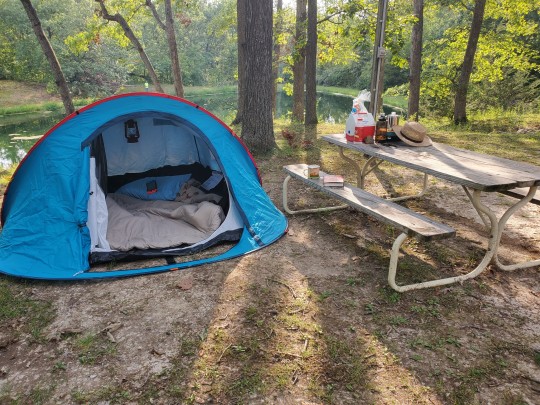
Pictured: A night of tea, mango juice, the sound of crickets and frogs, a cool yet uninvasive breeze, plenty of gazing trees, The Anthropocene Reviewed, The Legend of Zelda: Breath of the Wild, an 8 ounce ribeye steak, and the conscious decision to replace Loneliness with Solitude.
8 notes
·
View notes
Text
When my breastbone starts to hurt, and my throat tightens, and tears well in my eyes, I want to look away from feeling. I want to deflect with irony, or anything else that will keep me from feeling directly. We all know how loving ends. But I want to fall in love with the world anyway, to let it crack me open. I want to feel what there is to feel while I am here.
John Green The Anthropocene Reviewed (2021)
2 notes
·
View notes
Text

37 notes
·
View notes
Text
John Green: Sunsets are real
Me *on the brink of tears*: Fuck you're so right
6 notes
·
View notes
Text
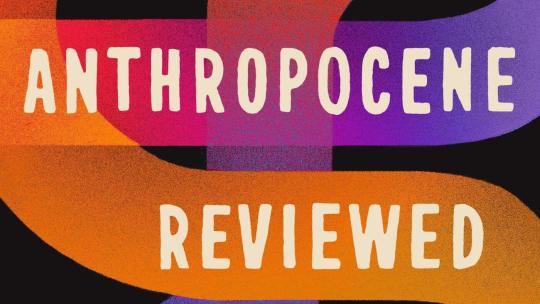
John Green's podcast Anthropocene Reviewed has an episode where he talks about the depression he experienced as a young man. It was the kind of depression that blew up his whole life. I use the podcast as a sleeping aid, and lately to make work hours pass quicker, because it's the sort of project that's made to be lightly amused by and quite impressed with. Maybe also the life time of using Crash Course for classes has made me fond of John Green's nasally voice and pleasant cadence.
This particular episode wasn't so pleasant. He describes what it was like to seek the treatment he needed and the hours of therapy and the prescribed drugs. All the while his bystander self believed that none of it would help.
I felt certain it wouldn’t work, because I didn’t think the problem was chemical. I thought the problem was that at my core I was worthless, useless, helpless. I was less and less each day.
That was how he put it. Opinions of Green's books have swung and swayed through the years, especially on Tumblr the home of that infamous post. Still, John Green is a well-practiced wordsmith. Hearing his thoughts from back then, I became stranded from the person at her work desk, only seeing myself in his words.
There are just some experiences you feel are yours and yours alone, nobody has ever felt the way you've felt. It wraps itself around you so wholely, it's so within you, it is you. And nobody else is you. Except some glimmer of clarity crashes in while reading a book, or watching a film, or listening to the right lyrics. Turns out that most happiness is the same sort of happiness. Most sadness is the same sort of sadness. Most depression is the same sort of emptiness.
It's strange now to think that I ever really felt the way he did. I am worth my life and more. I don't need a use. I have agency in my life and some agency in the world. But 10 years ago, I would have rather bit off my tongue than withstand the shame of what would have felt like lying. Depression isn't a sadness or a lack of energy, though those characteristics are a part of it. Depression is a total alienation from yourself. It's forgetting your interests and needs. It's becoming a foreigner in your own country. Where once you could navigate, the footpaths are lost and signs become unreadable.
The thing to recite over and over again into the full maturity of night is that there is rapturous joy in learning the language again and going where you need to go. I'm glad he found his way back and I'm glad I found my way back.
11 notes
·
View notes
Text
(R): How Oasis came to me
Discover here the way Oasis came - as things have to sometimes - to me and stayed.
‘Finding’ becomes synonymous with ‘being found’:
I am back at home, and here, there is the luxury of driving a lot, and often in these luxuries, I am revelling in the glory of Oasis, driving. It is not just that Oasis is my favourite band (which it is) but, Oasis’ entire discography feels like it was made to be heard during long vehicular rides. I wrote an entire essay about this titled, ‘Oasis…
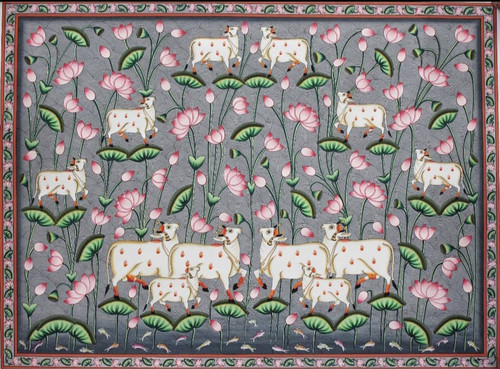
View On WordPress
#1975#1984 world fair#1990s#about you#anthropocene reviewed#art#bar#brewery#club music#creativity#dvd#fiction#George RR Martin#Germany#gold#idiom#iron#john green#Liam Gallagher#Louisiana World Exposition#Manchester#matt healey#metaphors#morning glory#music#Neil Gaiman#Noel Gallagher#oasis#philosophy#pop music
3 notes
·
View notes
Text
From Anthropocene Reviewed by John Green: America has to continually convince its citizens that it is real, and good, and worthy of allegiance.
Holy shit so true
4 notes
·
View notes
Text
i need the anthropocene reviewed: essays on a human-centered planet by john green RIGHT NOW
2 notes
·
View notes
Text
Great Blue Heron - Reviewed

Last semester, I took a class called Anthropos in the Anthropocene. It was really insightful, and i leaned a ton. heres an exerpt of the course description:
This course explores this writing and related work on the ways that humans interact with their environment. Its goals are to inform students about Anthropocene environmental conditions and debates surrounding the term; to trouble commonplace notions of what it means to be human; to show students how human-environment relations can vary historically and cross-culturally; and to encourage students to think critically about strategies for environmental conservation.
Our final project was to create a "blog post", and I chose to model mine after the format of my favorite book/podcast- The Anthropocene Reviewed by John Green
SOOO here i am sharing it :) it is an ~10 min listen !! let me know if you listen/what u think <3
YouTube link to audio: https://www.youtube.com/watch?v=KvgjDi41BnQ
Transcript:
Hello, and welcome to my own spin on the Anthropocene Reviewed, a podcast by John Green where he reviews facets of the human-centered planet on a five-star scale. My name’s Ixchel Quinn Cruz, and here in this episode I will be putting my own spin on the format, and reviewing the Great Blue Heron.
When I began this semester at Smith College, my professor, Colin Hoag, assigned us a semester-long project involving observing an organism in our environment. While at first my head was filled with ideas, as I went about my life the next few days, I could not get the idea of choosing this organism out of my head. I walked up the hill by Paradise Pond every afternoon as the sun was setting, and I always saw it : A tall, gray-ish blue heron standing tall in the evening light on the pond. Something about it drew me in. I could not help but stop and admire it, reveling in the beauty of this graceful bird in the pond, lit by the setting sun. I decided that I would wake up at 6am to go visit the heron whenever I could, over a few weeks. It was on these mornings that I developed such an intense affection for this heron.
Herons exist all around the world. They come in many shapes and colors and sizes, and there is a species of heron that exists on every continent in the world except Antarctica. The Great Blue Heron is one of the biggest and most well known species of heron in the world. I consider them incredible and stunning birds, with their grayish blue plumage and an impressive wingspan that would make anyone stop and look in the afternoon light. Seeing a heron on a pond is always quite a moving sight, and I am not alone in these beliefs.
In her inaugural speech to the college, the new president, Sarah Willie LeBreton mentioned the very heron I observed. She said on her first morning here, she woke up to the sight of a Great Blue Heron on Paradise Pond, and that its beauty stunned her and reminded her to be mindful of many things, namely the land that we inhabit and its ancestral ties to the native cultures that see herons symbolizing many things: including individual strength, patience, meditation, and stillness. The respect and admiration for the heron could almost be felt in the room that day. It was clear that so many of the people in attendance knew exactly of the heron she spoke of. It was such a powerful statement based on something seemingly so simple. Just a bird on the pond.
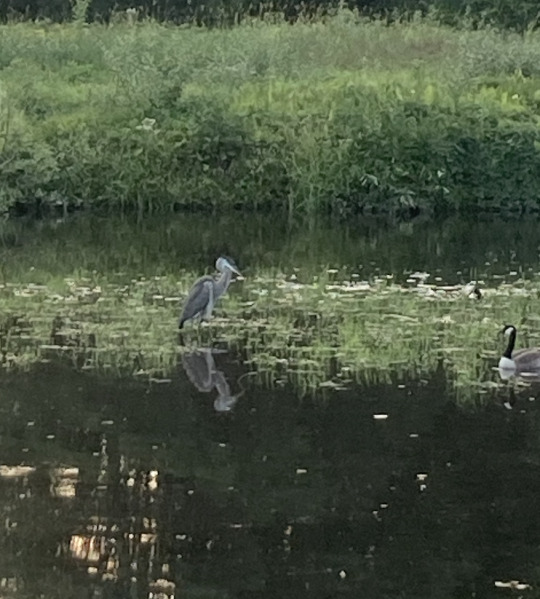
The canada goose is another water-dwelling bird of North America that frequents Paradise Pond, and its story mirrors the Great Blue Heron’s surprisingly well. They are both large birds hunted for game by European settlers that had astonishing comebacks after the Migratory Bird Treaty Act, which protected Great Blue Herons along with any other migratory birds under the law, was passed. They inhabit the same spaces and can often be seen together in marshes and ponds. However, our perception of the two is often very different. I think a common sentiment around the Canada Goose is resentment. Geese honk and strut and bite and are loud when flying in large groups. They are very defensive of their nests and they protect ferociously against their biggest predator, Humans. We often see them as a pest, taking up all the space in our waterways when, in fact, the ways we have structured our human worlds in the anthropocene often create the perfect place for them to inhabit. On the other hand, the seemingly solitary, quiet, graceful heron is praised and admired. We build sculptures of it (note the small pond by lyman next time you walk by), paint it, and talk about it with an air of reverence for such a beautiful creature.
An individual heron will nest communally in a large group, usually with dozens of nests (and sometimes hundreds of herons) placed high up in trees. These groups of nests, called rookeries, are loud, smelly, and herons are known to defend them when threatened. Herons tend to be quiet when we see them, but they can be loud, with a call that I have often heard compared to what people imagined a pterodactyl sounding like. I find it entertaining to think of the solitary heron on the pond that everyone seems to admire so much going home to its rookery, located most likely in the nearby Arcadia Wildlife Sanctuary, interacting with hundreds of others, calling to each other with their dinosaur-like noises.
What is it about our cultural understandings of these species that create these contrasting views of the two species? How do we place these two species in our own view of the world, in relation to our own human centered view of the world? In discussions with my peers about the heron, I often noticed a tendency to assign it a personal, english gendered pronoun like “him” to the heron.
“Oh that heron!! He is so…..”
This was one of many things I noticed that they did to humanize the heron, granting him personhood in a way, and talking about him less in the expected way most people would think to talk about birds.. One remarked on the fact that “he” is at once so beautiful and graceful, while also being “a little silly”. But, I can’t help but agree with them. The way it sits with its neck scrunched up in an S shape does look really funny, sort of as if it was hunching its shoulders up by its head.
This is one way we personify the heron, placing it within the context of our human-centered view of the world, in an attempt, I think, to connect to it. By giving it personhood, we in a way are granting it value and agency, as if their relation or proximity to personhood is what determines the importance of something’s existence. Above this, when we personify, we cannot avoid placing it within some sort of human context that inherently has meaning to us specifically? One friend described the heron as coming off as “kind of lanky and awkward” giving the impression that it might be shy, or too anxious to be social creatures. When we personify the heron like this, we inherently place it in a space where we can apply our pre-existing ideas on certain groups of a species. Since Aristotle’s first sketches of the evolutionary tree, humans have felt affection towards animals similar to us, but I noticed here that this works in the opposite direction as well – we as humans find ourselves relating to this heron as a result of our affection for it.
The heron isn’t alone on Paradise pond. Although the Great Blue Heron is one of the most recognizable and charismatic species on the pond, they are just as ecologically important as non-charismatic species. Birds, like mallards, mergansers, and canada geese share the waters they use for food, and other species, like toads, turtles, and muskrats, similarly share the marshlands as a home. All these creatures rely on the wetland and each other to live, and this balance can easily be thrown off.
When European settlers arrived in New England, they enjoyed hunting Great Blue Herons for game as well as for their beautiful plumage. This took a significant toll on their population numbers. European settlers also hunted the Beaver in extreme amounts in Massachusetts, which is important because their tendency to build dams on rivers and flood areas is a meaningful function to the ecosystems of wetlands. When the fur trade was at its height, Beavers were hunted and trapped until they nearly disappeared, making a significant and damaging impact to the whole landscape of New England. This obviously took a significant toll on herons as well, with many of the marshes and wetlands they rely on fading away, leaving them with no place to hunt, and no source of food. So they left.
These factors combined meant that by the 1870s, herons were not believed to nest in Massachusetts anymore. They were occasionally seen as migrants, but no nesting sites were known, and they were a pretty rare bird to find. The aforementioned Migratory Bird Treaty Act (MBTA), makes it illegal to “pursue, hunt, take, capture, kill, attempt to take, capture or kill, possess, or [use for commercial purposes]” any migratory bird in the U.S (Transect), making it illegal to capture, possess, or cause harm to a Great Blue Heron or its nest or eggs. This made it safe for herons to return and repopulate. However, the return was slow. There was one rookery recorded in 1925 that survived until it was destroyed by the hurricane of 1938, but no other colonies were documented until 30 years later, in the 1960s.
It took the reintroduction of beavers for this change to become meaningful. As beavers repopulated, they brought back many marshy areas with lots of dead plant matter, the perfect environment for herons to feed. The return of beavers to Massachusetts, as well as more stringent protection of both the herons themselves and the wetlands they depend on, resulted in an increasing return of the heron. Currently they are considered a low concern species on endangerment metrics, considered an unequivocally increasing species in Massachusetts. Their repopulation was joined closely with many other species of marsh-dwellers – including the canada goose.
Deborah Bird Rose’s concept of multispecies knots imagines the encounters we have with each other in the world across species as one piece of a larger story in the history of our species’ coexistence. The idea of an individual in a species existing not only as itself, but as a link in the chain of the species history, with endless history stretching back into the past and into the future, as well as entwined with our own species history. That first visit to the pond back in September, when I sat at 6 am observing Paradise’s heron, feels different when I think about it contextualized as one encounter that has been shaped by the infinite history that we share. When I consider the trust that heron must have had in me to let me sit that near, when its ancestors were hunted by mine. When you think of the fact that I was drawn to be out there, admiring the beauty in its routine, almost inspired by its existence when it was just going about its daily life. It was a completely unique interaction that has never happened before exactly like that and will never happen again, just one thread that weaves the story of our collective existence. Just two creatures in the world, passing by each other. Noticing each other I sometimes find it hard to conceive every single interaction I have with anything ever can be seen as just one link in the chain of the world. One thread in the tapestry of our shared existence, that all together form a larger story that none of us will ever be able to see. Not even the heron.
Yet, the heron on paradise pond continues to go about its life. And I walk up, away from my pond, back to my homework, back to dinner with my friends. Just more threads forming the tapestry. I find it only fair to give the Great Blue Heron five stars.
★★★★★

Works Cited
ABC Birds. “Great Blue Heron.” 22 September 2021, https://abcbirds.org/bird/great-blue-heron/?psafe_param=1&gclid=Cj0KCQiAgK2qBhCHARIsAGACuzkBLa83htftDmVxYU8En8DwNvK97dtGckGC1_o2qUMylqN2F9XaojAaAk04EALw_wcB. Accessed 10 November 2023.
Dankosky, John, and Lily Tyson. “The History of Beavers in New England With Ben Goldfarb.” New England News Collaborative, 2 August 2018, https://nenc.news/ben-goldfarb-the-history-beavers-new-england/. Accessed 10 November 2023.
Green, John. Anthropocene Reviewed: Essays on a Human-Centered Planet. Perfection Learning Corporation, 2023.
Haraway, Donna Jeanne. 2003. The Companion Species Manifesto: Dogs, People, and Significant Otherness. Chicago: Prickly Paradigm Press. Pp. 1-47
Hejnol, Andreas. 2016. “Ladders, Trees, Complexity, and Other Metaphors in Evolutionary Thinking.” In: Arts of Living on a Damaged Planet: Stories from the Anthropocene. Tsing, Anna Lowenhaupt, Nils Bubandt, Elaine Gan, and Heather Anne Swanson, eds. Pp. G87-102. Minneapolis, MN: University of Minnesota Press.
IUCN. “Great Blue Heron.” 2 October 2022, https://www.iucnredlist.org/fr/species/181500967/181565357. Accessed 10 November 2023.
Massachusetts Audubon. “Find a Bird.” Find a Bird, https://www.massaudubon.org/our-work/birds-wildlife/bird-conservation-research/breeding-bird-atlases/find-a-bird?id=948. Accessed 10 November 2023.
Massachusetts Audubon. “Great Blue Herons.” Mass Audubon, https://www.massaudubon.org/nature-wildlife/birds/great-blue-herons. Accessed 10 November 2023.
Native Languages. “Native American Indian Heron Legends, Meaning and Symbolism from the Myths of Many Tribes.” Native-Languages.org, http://www.native-languages.org/legends-heron.htm. Accessed 10 November 2023.
Rose, Deborah Bird. 2012. “Multispecies Knots of Ethical Time.” Environmental Philosophy 9(1):127–140.
Transect. “The Bald Eagle & Migratory Bird Treaty Acts (2023).” Transect, https://www.transect.com/bald-eagle-migratory-birds-act. Accessed 10 November 2023.
US Fish and Wildlife Service. “Migratory Bird Treaty Act of 1918 | U.S. Fish & Wildlife Service.” U.S. Fish and Wildlife Service, 26 April 2020, https://www.fws.gov/law/migratory-bird-treaty-act-1918. Accessed 10 November 2023.
0 notes
Text
youtube
1 note
·
View note
Text
I had a financial independence lesson in one of my classes and I like it, and it really didn't feel like a "make money while you sleep" lesson, but a legitimate "this is how investing works, and retiring is possible". People can invest and get money from high yield savings accounts, but this is all contingent on not living paycheck to paycheck.
And that's all well and good, I am planning on entering a field that would allow me to maybe be able to save money every month, but our financial system really makes it easy for the rich. Money makes money that makes more money. It costs a lot more to be poor, and the whole system is punishing you for not having money.
It is the opposite of mario kart. John Green wrote about this in The Anthropocene Reviewed (podcast and book) in the part about Super Mario Kart and the Bonneville Salt Flats and I have been thinking about it a lot.
#financial planning#anthropocene reviewed#if anyone wants my notes from the lesson message me and I can send them#Retirement is possible! but like I feel like I can retire bc I went to college and am graduating in stem and am also married to a stem majo
0 notes
Text
rereading the anthropocene reviewed. not doing well.
1 note
·
View note
Text
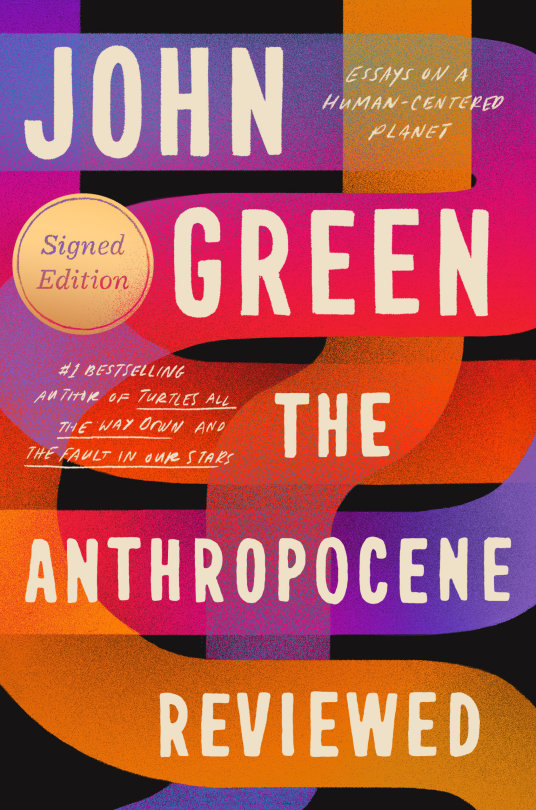
[2024|005] The Anthropocene Reviewed (2021) written by John Green
0 notes
Text
I said I would start posting original prose, so here's the one that got me first place in my first slam poetry night
Context: inspired by the essay "Kentucky Bluegrass" in John Green's book "The Anthropocene Reviewed".
Humans are charismatic species.
We are full of wonder and love and beauty.
It's in the way we leave little messages wherever we go;
hello's and hearts drawn on benches and walls.
Steamy scribbles on fogged up mirrors.
Smiles etched in wood.
A yearning to show that we are here, we are here, we are here.
A naïve attempt to be immortal.
It's in the way that we communicate not just with words but with sounds, pictures, music.
It's in the way we smile without question – a silent hello, I see you.
It's in the way we crave human contact, to the point where we can get physically ill from its deficiency.
We are empathetic to a fault, feeling emotions so strong even when it has nothing to do with us.
It's in the way we love.
Loudly, dramatically, screaming from the rooftops.
Carelessly, subconsciously, recklessly, falling into a black abyss.
Quietly, fondly, wholeheartedly.
It's in the way we love without thought.
How can someone see all this and not fall in love with humanity?
I look around and I see smiling faces and barely concealed fondness.
I see, and read, and hear the echoing symphony of humanity;
the beating drums that play to the sound of a heart beat.
There is good, there is good, there is good in this world
If only we open our eyes and look.
In the same way that we turn to look
And see the vile of man.
I know that there is pain and stress and shards of glass beneath our feet
And there are problems that we cannot solve
But are expected to solve.
And that there are heavy burdens placed upon us, and expectations and pressures
And that the people before us see us as the solution to all their problems
As the solution to the problems that they have caused.
I know that there is pain and hatred and greed,
envy, poverty, war and death.
But there is also life.
And hope.
And kindness.
And there’s good in this cold-hearted world.
There is a subconscious love buried deep within humanity
And that must count for something.
I'd like to believe that it counts for something.
The inherent goodness that can be seen by those who look for it.
For we are a species that cannot survive without the other
A charismatic species.
#original poem#writeblr#my writing#writing community#poets on tumblr#john green#anthropocene reviewed
1 note
·
View note
Text
Podcasts I'm Currently Listening To
Part 3: Rest in Earpeace
These are over. As far as I know, there will not be any more episodes of the following.
Barjory Buffet the Cruise Detective
Not worth getting into how I learned of it's existence. It's a weird unicorn of a show: a modern radio drama "mystery of the week" format with some consistency through lines.
Barjory is a detective. But only on cruise ships. She's also an alcoholic and addicted to processed sugar, I think? So there are a lot of murders and drinking.
It's batsh*t insane at times. It's occasionally hilarious. It's often irritating as hell. There's one episode where Shaquille O'Neal appears (via excerpts from some interview that the producers somehow got away with using.)
7/10
My Dad Wrote a Porno
One of the greats. Even when it wasn't that great, it was great. Listening to it alone was great, sharing it with friends was great. Knowing it exists in the world is great.
10/10
Marvel's Squirrel Girl: The Unbeatable Radio Show!
Extremely good. The writing is spot-on, the voice cast was superb, and everything about it was delightful. And its MARVEL CANON.
I only wish there could be more of it.
10/10
Anthropocene Reviewed
"John Green reviews facets of the human-centered planet on a five-star scale."
It was a little pretentious at times. But that is admittedly, not a problem for me and my podcast tastes.
4/5
#barjory buffet#my dad wrote a porno#squirrel girl#unbeatable squirrel girl#unbeatable radio show#anthropocene reviewed#podcasts
0 notes